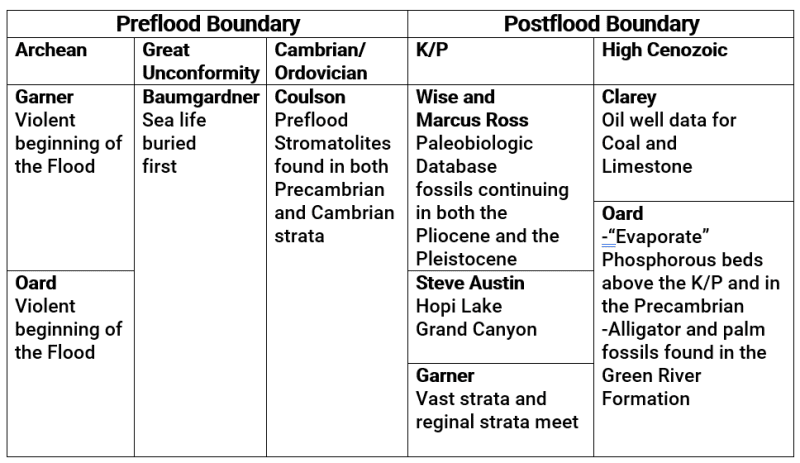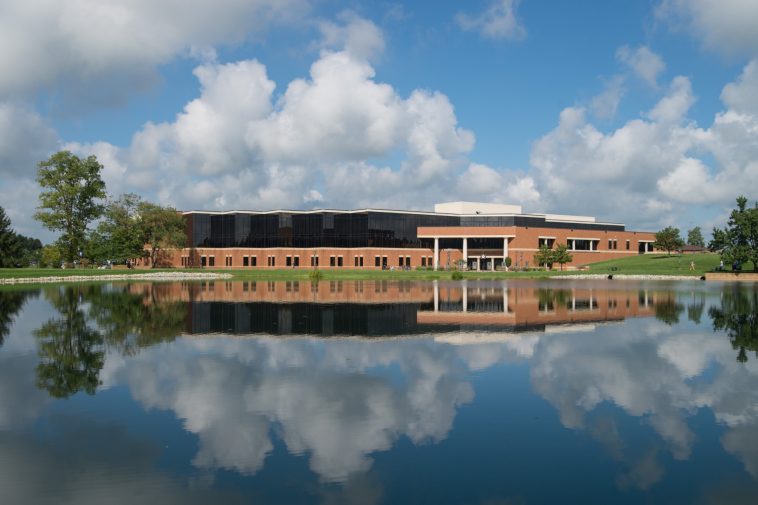August 2023
I love logic puzzles, especially those using math, shapes, patterns, or clues. Lately, I have discovered a new form — connecting the dots. The goal is to connect all the dots on the grid with a continuous line that never crosses itself but eventually forms a loop. There are a few other criteria that must be met, such as when the line must be straight and when it must turn. At first glance, it seems impossible, but every puzzle has a solution. It cannot be solved with trial and error; you have to logically think through how those dots connect. All it takes is one wrong turn to mess up the whole puzzle.
I was reminded of those puzzles as I listened to the Flood boundary presentations at the 9th ICC held at Cedarville University. Although there were good points made in every presentation, many of the presentations seemed to be contradictory.
Is there a way to connect the dots?
After reviewing my notes, I decided to list what I considered everyone’s main point and then try to connect them:
- Dr. Tim Clarey believes the Flood boundary should be drawn high, between the Pliocene and the Pleistocene. He based his boundary on geological data gathered from thousands of oil well core samples from every continent except for Antarctica — obviously, and Australia, which is still in the works. When analyzing the data, he discovered there was too much sediment, especially limestone and coal, in the Tertiary for him to believe it formed Postflood. He made a number of other good points as well, but the limestone and coal seemed to be his main reason for a high boundary.
- Dr. Kurt Wise believes the Flood boundary should be drawn at the K/P, which is between the Cretaceous and Paleocene (or just after the dinosaur fossils vanish from the record, yet beneath most of the mammal fossils). He based his boundary on paleo data gathered from the Paleobiologic Database, which charts the location of reported fossil discoveries. He discovered that there were many fossils continuing from strata to strata in both the Pliocene and the Pleistocene. He interpreted this as Postflood animals having to return to the same location where Preflood animals had lived and then had been buried and fossilized during the Flood.
- Dr. Steve Austin gave an interesting presentation showing the transgressive terraces of the ancient Hopi Lake. He believes the quick draining of the lake is what carved Grand Canyon. I think he would draw the Flood line at the K/P boundary, considering that he thinks the carving of the Grand Canyon is Postflood.
- Dr. John Baumgardner gave a good summary of CPT and the triggered tsunamis which then flooded the land. He described how guyots, underwater flattop volcanoes, show how the sea floor has been lowered. He believes the Great Unconformity marks the beginning of the Flood with sea life being buried first. However, when it came to the Postflood boundary, he was noncommittal, saying either the K/P or Pliocene. But then he went on to point out the thick coal seams and large conglomerates of the Wasatch Formation and Power River Basin. He also mentioned that Bryce Canyon and its arches were formed by massive erosion, probably from the Flood runoff. So it seems that he favors the higher Postflood boundary.
- Dr. Ken Coulson gave a presentation on the types and abundance of stromatolites (large colonies of fossilized bacteria) found in both the Precambrian and Cambrian strata. He believes the yearlong global Flood would not have provided enough time for the formation of the stromatolites, and therefore they must be Preflood. He would draw the Preflood boundary between the Cambrian and the Ordovician, which is higher than the now-accepted Great Unconformity boundary.These are a lot of dots, and there are still a few more.
- Paul Garner believes the Preflood boundary should actually be within the Precambrian. He said Scripture should be used to show the epoch events and that the stratum varies according to the event. The violent beginning of the Flood would be marked by sedimentary strata on granite. But, for the Postflood boundary, he draws it where the vast strata and regional strata meet. He believes the Flood would lay vast strata, while regional strata like the Green River Formation would have been formed by lakes and thus be Postflood, so another vote for the K/P boundary.
- Mike Oard also believes in a low Preflood boundary. He said the violent beginning of the Flood ground down to where the granite is today. In his opinion, if there had been Preflood sedimentary layers, they would not have survived the early Flood. Therefore, the Precambrian strata we have today had to have been formed during the Flood. His main focus was on the Postflood boundary, which he believes should be drawn high due to the huge volume of sediment, especially “evaporates.” He believes these were actually formed from precipitation from the Flood waters, not by evaporation. He pointed out that phosphorous beds, which are mostly found above the K/P and in the Precambrian, support both the lower Preflood boundary and the higher Postflood boundary. Although he did not draw an exact line, saying it may vary from area to area, he believes it should be in the Late Cenozoic. He particularly pointed out that the high-elevation alligator and palm fossils found in the Green River Formation were from the Flood.
- Dr. Marcus Ross had the same main point as Dr. Kurt Wise: Postflood animals would not have left the ark only to live on the graveyards of those from the Flood. In other words, there are too many fossils of the same kind of mammals in both the Pliocene and the Pleistocene for the Postflood boundary to be drawn between the Pliocene and the Pleistocene, therefore all of those overlapping mammal fossils must be Postflood.
I am going to try to chart the dots to see if connections are even possible.

Now that they are charted, the conflicting views really stand out. With added logic, can they connect? Obviously, not everyone’s conclusion can be correct, but could every main point be taken into consideration and used to draw a conclusion? We all know that we are dealing with historical science, so only God really knows where in the geological column the Flood layers start and finish. We should keep this in mind and not belittle one another’s opinion as we seek as logical a connection as possible.
Just as in the logic problems, there are some criteria that must be met.
- There must not be any biblical contradiction.
- Observation trumps interpretation.
Scientists always need to be prepared to accept that what we see needs to trump what we strongly believe happened. For example, the observed 250-300 feet of ice that buried WWII planes in Greenland took only 50 years to accumulate. So, even though ice sheets have been interpreted as taking long periods of time to form, observation shows an ice accumulation rate of 5-6 feet per year is possible. In next week’s article, I will show how I connect the dots for the Preflood boundary, and then the following article will cover the Postflood boundary.






